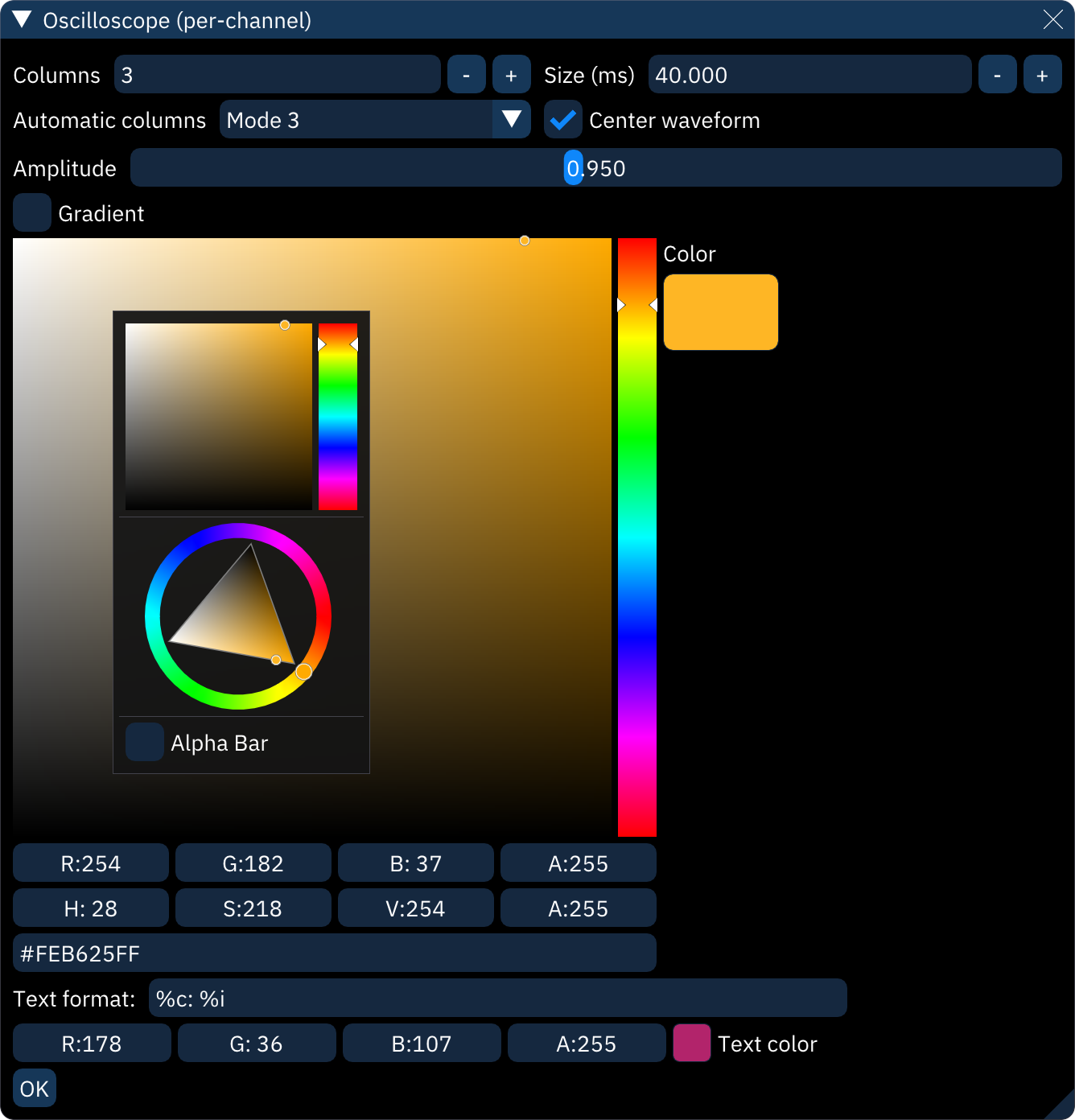oscilloscope (per-channel)
the "Oscilloscope (per-channel)" window displays several oscilloscope views (one per channel).

right-clicking the view will display the configuration view shown above:
- Columns: sets the amount of columns for the oscilloscope views.
- Size (ms): sets how much of a channel's output is captured for the oscilloscope view.
- Center waveform: when enabled, the displayed waveforms will be centered using an auto-correlation algorithm.
- Automatic columns: sets the number of columns based on the number of channels.
- Off: use the Columns setting.
- Mode 1: always fewer columns than rows.
- Mode 2: bias slightly toward more columns.
- Mode 3: always more columns than rows.
- Amplitude: scales amplitude for all oscilloscope views.
- Line size: controls line thickness.
- Gradient: this allows you to use a gradient for determining the waveforms' colors instead of a single color. see the gradient section for more information.
- if this option is off, a color selector will be displayed. right-click on it for some options:
- select between the square selector and the color wheel selector.
- Alpha bar: display an opacity bar.
- Text format: this allows you to display some text on each oscilloscope view. the following codes may be used:
%c: channel name%C: channel short name%d: channel number (starting from 0)%D: channel number (starting from 1)%n: channel note%i: instrument name%I: instrument number (decimal)%x: instrument number (hex)%s: chip name%p: chip part number%S: chip ID%v: volume (decimal)%V: volume (percentage)%b: volume (hex)%l: new line%%: percent sign
click on OK to return to the main view.
gradient

when enabling the Gradient setting, a gradient view is displayed in where circular "points" can be placed.
each point adds a color spot.
the resulting image is used to look up the waveform's color as determined by each axis.


